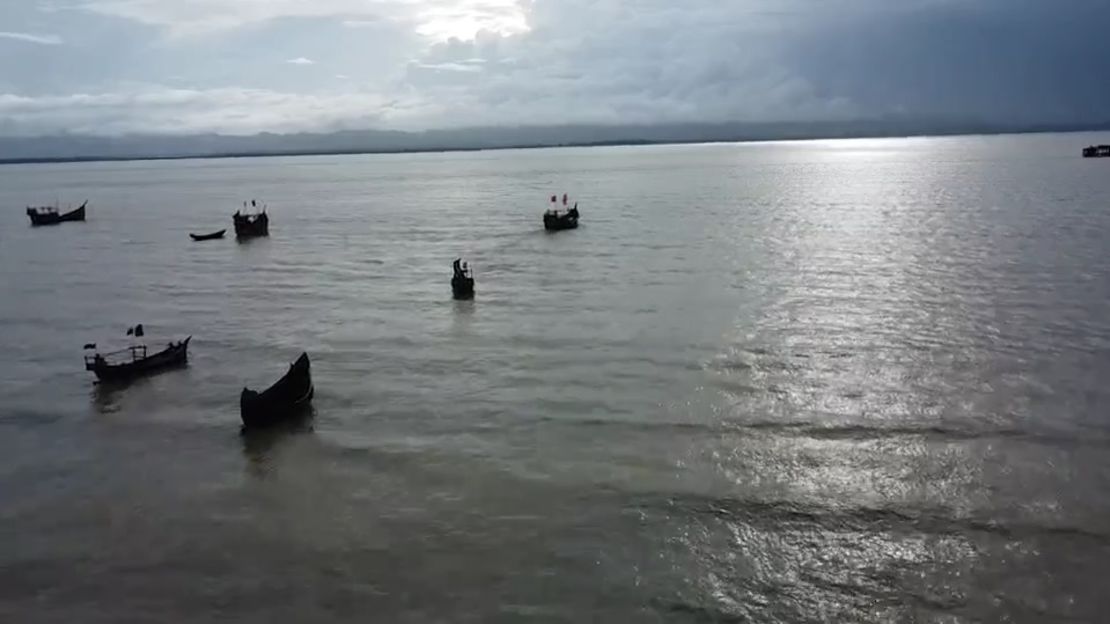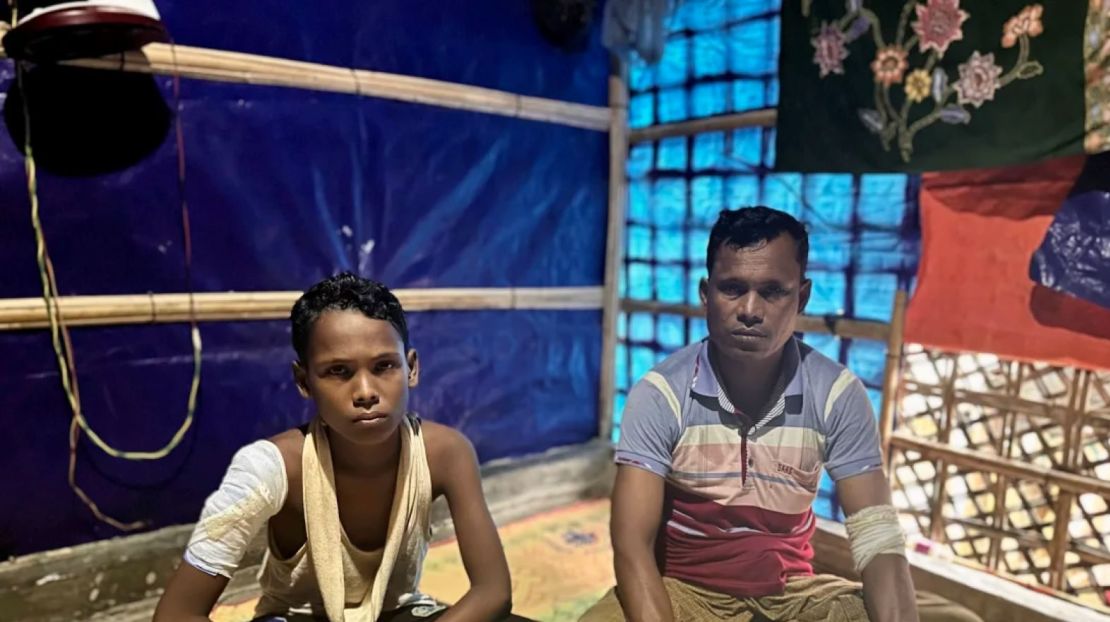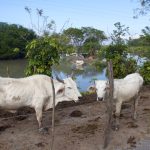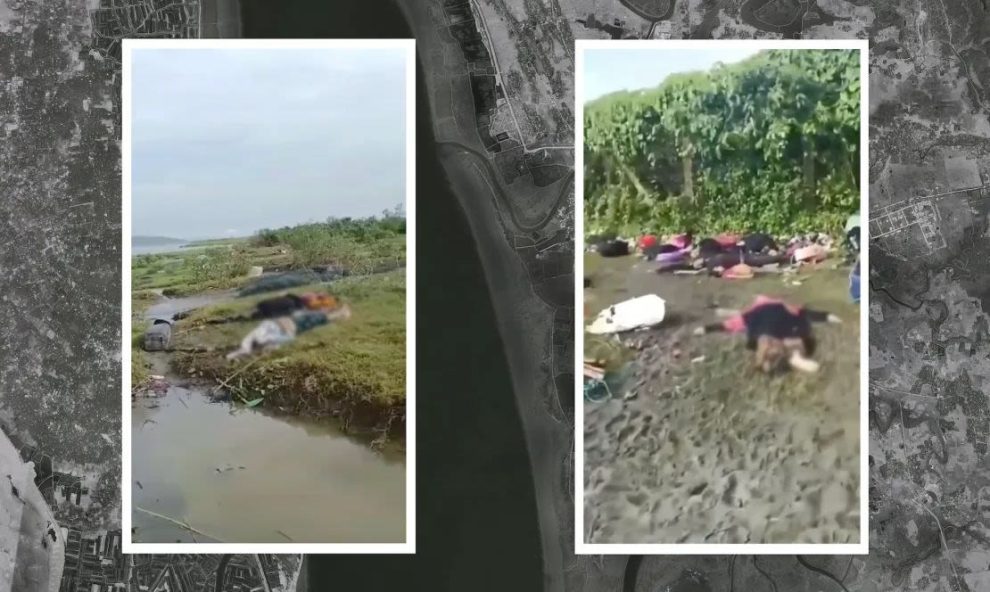() – As tears stream down her face and her body shakes in pain, Hamida cradles her 4-year-old daughter and baby in her lap, comforting them as they cry for their father.
This 22-year-old Rohingya woman survives thanks to the kindness of other refugees in a camp near Cox’s Bazar, Bangladesh, and tries to come to terms with the horrors she suffered in neighboring Myanmar, where a civil war is raging between the army. of the country and rebel groups such as the Arakan Army.
“When they entered my house, they hit me, they beat me and I was struggling to free myself when they raped me,” says Hamida. “For at least an hour, they tied me up.”
Hamida – who asked to use only her first name for fear of reprisals – claims she was gang-raped by seven Arakan Army soldiers during the late July attack in Myanmar’s western Rakhine state.
“I screamed and they closed my mouth with their hands,” he says. “I’ve been raped. They hit me with their weapons. They kicked me. Still, I can’t move (without) pain.”
During the attack, she says her husband heard her screams and ran to their hut to save her, but he was restrained and forced to watch.
“They massacred my husband after raping me,” she says. “Four Arakan Army soldiers held him tightly, and one massacred him with a large sharp knife.”
cannot independently verify Hamida’s account of the attack, nor that of other survivors who fled to safety across the Naf River, which forms a natural border between Myanmar and Bangladesh.
Known as the world’s largest refugee camp, more than a million Rohingya Muslims are sheltering in makeshift tents near the city of Cox’s Bazar. Most of whom fled there in August 2017, after the Myanmar military killed about 10,000 people in what United Nations experts called genocide.
Now, newcomers like Hamida are bringing reports of mass killings, shelling of civilians and torched villages, which bear the hallmarks of the 2017 attacks, seven years later. But this time the brutality is blamed on the ethnic Rakhine rebel group Arakan.
Witnesses say the deadliest day of the attacks was August 5, when an estimated 200 people died as drones rained down bombs on those. They were fleeing the fighting in the city of Maungdaw.
Videos spread widely on the internet show piles of bodies – mostly women and children surrounded by their belongings – scattered across a mangrove forest along the coast, massacred as they tried to board a ship to Bangladesh.
Abdul Bashar, a 48-year-old father who survived the drone attacks, says they occurred around 6 p.m. that day.
“When we reached the border fence, we saw a large bomb fall on a group of people, killing many of them,” he says. “They were attacking with drones, gunshots and heavy weapons. “It seemed like the end of the world.”
Bashar watched his 17-year-old son die and his sister, murdered while breastfeeding her 8-month-old daughter.
“I couldn’t look back because the bombs were falling hard,” he said. “I had two of my children with me and I was bleeding.”
Bashar is now sheltering in a camp in Cox’s Bazar with his 10-year-old nephew, whose parents and five siblings were killed in the attack. The boy survived despite serious shrapnel wounds to his arm.
“I feel like death would be better than experiencing this,” Bashar said.
A new report from human rights group Fortify Rights urges the International Criminal Court (ICC) to “investigate the massacre of Rohingya civilians by the Arakan Army (AA).” Another report from Human Rights Watch claims the attacks “raise the specter of ethnic cleansing.”
In an interview with , Arakan Army spokesman Khaing Thu Ka denied allegations of atrocities, calling the reports “fake news and misinformation.”
He claimed that AA fighters “have never attacked or killed innocent civilians,” and claimed that the August 5 drone strikes were carried out by the Myanmar Army.
The Myanmar Army blames the AA for the attacks. cannot independently attribute responsibility reports or verify the number of people who died.
Responding to another question about Hamida’s gang rape testimony, the AA’s Khaing Thu Ka said the group would “certainly investigate” her case.
The Rohingya – a predominantly Muslim ethnic group with their own language and culture – have long been persecuted and deprived of citizenship in Buddhist-majority Myanmar, and official propaganda describes them as “Bengalis” or “illegal immigrants.” They are also denied official status in Bangladesh, which is why they are known as “the most unwanted people in the world.”
Bangladesh’s new interim chief, Muhammad Yunus, has vowed to continue supporting the Rohingya in his country, but has called for the fighting in Myanmar to end so they can return to their homeland with “safety, dignity and full rights.”
Strict checkpoints remain in place along the 30km bank of the Naf River that meanders between Myanmar and its neighboring country, and Bangladeshi border guards are under orders to try to keep out fleeing Rohingya.
Refugees now take cover in darkness to try to evade capture, often leaving Myanmar at around 10pm to make the 3km journey across water.
As midnight approaches, drives up the long coastal road to a tiny fishing village in the far south of Bangladesh to meet a Rohingya refugee who sneaked out of the camp to join his sister, who was due to arrive by boat from Myanmar that same night.
All phones on the ship had been turned off for safety reasons during the voyage, so he went for hours without receiving any news.
“I am very worried,” said Mohammed, who did not want to use his real name. “She’s my older sister.”

He worries that his sister, who doesn’t know how to swim, could drown during the crossing. Many refugee boats have sunk in recent weeks, and the bodies of their desperate passengers have washed ashore and been buried in shallow graves on the beach.
To compound Mohammed’s fears, before dawn explosions and rifle shots are heard across the river, reminding why his sister and other Rohingya are fleeing.
On the Bangladesh side, the coast guard plays a game of cat and mouse to detect vessels emerging from the murky waters before they reach dry land. The full moon casts a silvery glow over the river, putting arriving boats in greater danger of being discovered.
A senior border guard who spoke to on the beach said that if boats come ashore during their guard, they typically provide food to the people on board before sending them back.
Mohammed’s sister does not appear that night and, at dawn, panic begins to spread.
“Now the world is dark for me,” he says. “I have lost everything… in my life.”
Hours later, he learns that his sister made it ashore further up the coast, but was kidnapped by middlemen who demanded payment for her release. She was finally able to join Mohammed in the camps, but the family spent all their money getting her to safety.
Despite difficulties crossing, Bangladeshi authorities told that more than 5,000 Rohingya have arrived in Bangladesh from Myanmar during the latest fighting.
Calls are now growing for Bangladesh to allow humanitarian access to arriving refugees.
“UNHCR calls on Bangladesh to provide access to safety for refugees fleeing violence in northern Rakhine State, most recently in Maungdaw township,” said Shari Nijman, spokesperson for UNHCR Bangladesh. “Among the new arrivals are many women and children, including some with critical injuries from gunshots and shelling.”

Doctors Without Borders (MSF) – which runs multiple clinics in Cox’s Bazar – told that they had treated 54 people who arrived with “war wounds” between August 5 and 11, 48% of whom were women and children.
Jamila Begum, 45, managed to cross in a boat with four of her orphaned grandchildren.
She said her family tried to flee their homes on August 5 during a lull in the fighting, but then bombs “fell on the roof of the house,” killing Begum’s daughter, her husband and her daughter. 7 years. Begum managed to take the youngest, a 6-month-old baby, from her daughter’s arms.
Begum fled with the grandchildren and they hid for five days before embarking for Bangladesh. But her eldest grandson did not survive: he died from his injuries before they could find a boat, and she was forced to abandon him on the beach.
When they left, he learned that Arkan Army (AA) soldiers had set fire to his village.
“AA wants to eliminate the Rohingya from Rakhine State,” says Begum, echoing the sentiments of the dozen refugees spoke to.
Now, Begum is safe in the fields, but fears for the future of her grandchildren as she is their only guardian.
“Sadness will not disappear from our lives,” he says.
Editor’s note: This story contains disturbing descriptions of violence.
– ‘s Helen Regan and Avery Schmitz contributed to this report.







![[Img #74065]](https://thelatestnews.world/wp-content/uploads/2024/10/Nobel-Prize-in-Physics-2024-150x150.jpg)



Add Comment